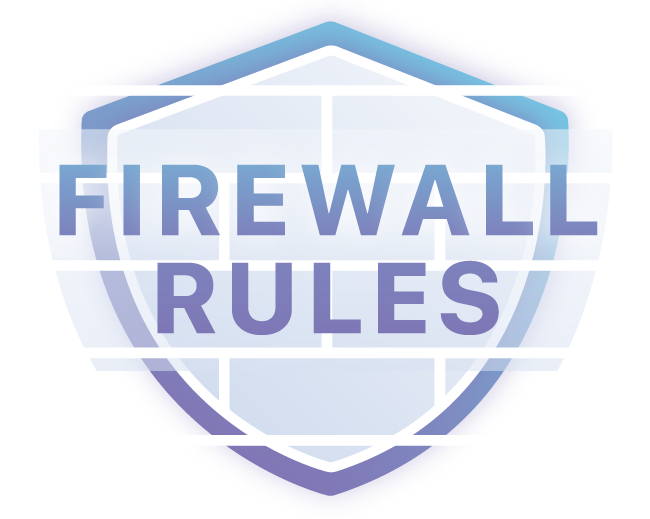IPv6 Buzz 010: Understanding And Troubleshooting IPv6 With Wireshark
Today's IPv6 Buzz podcast explores using the Wireshark protocol analyzer to understand and troubleshoot IPv6. Our guest is Jeff Carrell, an expert instructor in IPv6 and Wireshark.
The post IPv6 Buzz 010: Understanding And Troubleshooting IPv6 With Wireshark appeared first on Packet Pushers.
IPv6 Buzz 010: Understanding And Troubleshooting IPv6 With Wireshark
Today's IPv6 Buzz podcast explores using the Wireshark protocol analyzer to understand and troubleshoot IPv6. Our guest is Jeff Carrell, an expert instructor in IPv6 and Wireshark.CRTC Fund Makes Important Commitment to Indigenous Connectivity Solutions

While a new fund by the Canadian Radio-television and Telecommunications Commission (CRTC) has disappointed some Internet advocacy groups, we believe it could be critical to bringing Indigenous and northern communities online and closing Canada’s digital divide.
The Broadband Fund is slated to provide $750 million over five years, in addition to $500 million in funding by Innovation, Science & Economic Development Canada (ISED) to help Canada meet its universal service objective.
The CRTC is catching heat for halving project eligibility speeds, from 50 Mbps downloads to 25 Mbps (with a plan to scale to the original target), that were laid out in 2016 as part of a declaration that all Canadians should have broadband Internet as a basic telecommunications service. Because of this, some are saying it may give applicants less incentive to achieve the universal service target.
While speed is an important measure of Internet quality, it is not the only measure of success.
What I believe many are overlooking is that eligible applicants not only must outline how they’re going to consult communities as part of their plan, they must commit to respecting treaty and land claim rights if the project impacts Indigenous communities.
That makes it an unprecedented Continue reading
Accumulated IGP and BGP
The post Accumulated IGP and BGP appeared first on Noction.
Got A Few Minutes? Take The 2018 Packet Pushers Audience Survey
 The only begging I will do this year.
The only begging I will do this year.7 Common Network Latency Culprits
If you can quickly identify and remediate these problems, applications are far more likely to operate as intended.
Leaf-and-Spine Fabric Myths (Part 1)
Apart from the “they have no clue what they’re talking about” observation, Evil CCIE left a long list of leaf-and-spine fabric myths he encountered in the wild in a comment on one of my blog posts. He started with:
Clos fabric (aka Leaf And Spine fabric) is a non-blocking fabric
That was obviously true in the days when Mr. Clos designed the voice switching solution that still bears his name. In the original Clos network every voice call would get a dedicated path across the fabric, and the number of voice calls supported by the fabric equaled the number of alternate end-to-end paths.
Read more ...Cloudera, Hortonworks Merge Their Big Data Efforts
 A recent Forrester Research report on the big data fabric space ranked companies as “strong performers."
A recent Forrester Research report on the big data fabric space ranked companies as “strong performers."
Kernel of Truth episode 8: Network agility
Podcast: Play in new window | Download
Subscribe to Kernel of Truth on iTunes, Google Play, Spotify, Castbox and Stitcher!
Click here for our previous episode.
On this week’s Kernel of Truth episode, we’re breaking down network agility and why it’s important to you. The networking world loves a good acronym, but have no fear, this episode will also begin to unscramble the alphabet soup that comes with the technology. For this episode we brought in Attilla de Groot and Scott Edwards to discuss why agile networks are changing the tech world, how we got here, and what’s next.
If you’re interested in learning about the virtualization of IT, new innovations, and how that’s helping computing power become greater and faster than ever, this episode is for you. We discuss how Cumulus is making design methods and network architecture that’s easier for our customers to use and how we’re working to design a simpler, more freeing approach to networking and much more. So grab your headphones and sit back for 25 minutes of networking goodness!
Guest Bios
Attilla de Groot: Cumulus Networks; Attilla has spent the last 15 years at the cutting edge of Continue reading
Announcing Firewall Rules


Threat landscapes change every second. As attackers evolve, becoming more dynamic and devious, vulnerabilities materialize faster than engineers can patch their applications. Part of Cloudflare’s mission is to keep you and your applications safe. Today, Cloudflare is launching a new feature, giving customers what they have been requesting - fine-grained control over their incoming requests.
Cloudflare already offers a number of powerful firewall tools such as IP rules, CIDR rules, ASN rules, country rules, HTTP user-agent blocking, Zone Lockdown (for these URIs only allow traffic from those IPs), and our comprehensive managed rules within our WAF (Web Application Firewall). But sometimes, you need to combine the power of these to fully mitigate an attack, and to express a block rule that breaks the boundaries of the existing tools, to be able to “block traffic to this URI when the request comes from that IP and the user-agent matches one of these”.
Flexibility and Control

© Stefano Kocka : Source Wikipedia
Common themes arose when we spoke to customers about their needs and also reviewed feature requests that our customer support team had seen, and we categorised the top pieces of feedback and feature requests into three core needs:
- More flexibility Continue reading
Ryu measurement based control
ONOS measurement based control describes how real-time streaming telemetry can be used to automatically trigger SDN controller actions. The article uses DDoS mitigation as an example.This article recreates the demonstration using the Ryu SDN framework and emulating a network using Mininet. Install both pieces of software on a Linux server or virtual machine in order to follow this example.
Start Ryu with the simple_switch_13 and ryu.app.ofctl_rest applications loaded:
ryu-manager $RYU_APP/simple_switch_13.py,$RYU_APP/ofctl_rest.pyNote: The simple_switch_13.py and ofctl_rest.py scripts are part of a standard Ryu installation. The $RYU_APP variable has been set to point to the Ryu app directory.
This demonstration uses the sFlow-RT real-time analytics engine to process standard sFlow streaming telemetry from the network switches.
Download sFlow-RT:
wget https://inmon.com/products/sFlow-RT/sflow-rt.tar.gzInstall the Mininet Dashboard application:
tar -xvzf sflow-rt.tar.gz
sflow-rt/get-app.sh sflow-rt mininet-dashboardThe following script, ryu.js, implements the DDoS mitigation function described in the previous article:
var ryu = '127.0.0.1';
var controls = {};
setFlow('udp_reflection',
{keys:'ipdestination,udpsourceport',value:'frames'});
setThreshold('udp_reflection_attack',
{metric:'udp_reflection',value:100,byFlow:true,timeout:2});
setEventHandler(function(evt) {
// don't consider inter-switch links
var link = topologyInterfaceToLink(evt.agent,evt.dataSource);
if(link) return;
// get port information
var port = topologyInterfaceToPort(evt.agent,evt.dataSource);
if(! Continue reading
Dell Technologies Confirms IPO Is Its Backup Plan
 Dell said in a filing with the SEC that the company met with investment banks to explore an IPO.
Dell said in a filing with the SEC that the company met with investment banks to explore an IPO.
What to Expect: CCIE Routing and Switching Written Exam Bootcamp
Our bootcamps are a great study resource for CCIE candidates. No matter whether you’re just starting out on your CCIE training journey, or have been studying for months, an INE bootcamp can help you gauge where you’re at in the study process and what you need to focus on before attempting your CCIE Exams.
What is a Bootcamp?
Bootcamps are intensive, live classes that typically last from 5-7 days. Bootcamps allow you to dive further into your study path in a small classroom environment with an in-person, expert INE instructor leading the way. Each bootcamp class will cover a specific list of topics tailored to the Cisco track and certification level you are studying. Our instructors will customize the training to focus on certain topics and technologies that best meet the individual requests of the students in your bootcamp.
What’s a Bootcamp Class Actually Like?
In our Written Routing and Switching Bootcamp you will learn about Switching, RIP & EIGRP, OSPF, BGP, MPLS, Redistribution and Evolving Technologies. Our 7 time CCIE, expert-instructor, Rohit Pardasani, will not only help you understand all of the essential R&S topics for this exam, he will also share study techniques and prepare you for Continue reading
Particle Migrates IoT Software Developer Tool to Microsoft
 The Workbench product is a desktop development tool that now uses Microsoft Visual Studio Code for direct access to device programming.
The Workbench product is a desktop development tool that now uses Microsoft Visual Studio Code for direct access to device programming.

